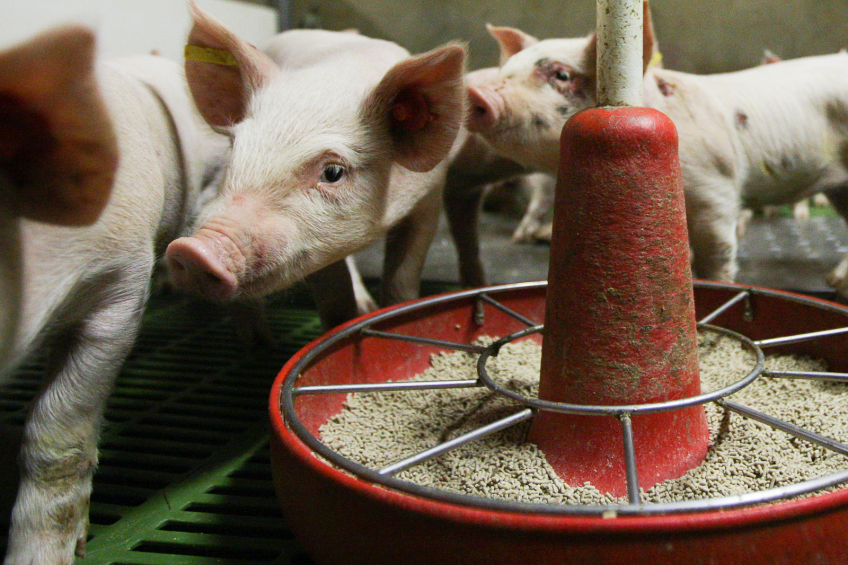Adding phytase to milk co-products in piglet feed

Inclusion of microbial phytase can increase the digestibility of calcium in diets containing milk co-products, US research found.
The researchers also found that the digestibility of the calcium in the milk co-products, however, was not improved by the phytase. Instead, the increase of calcium digestibility was due to an increase in other sources such as plant ingredients or calcium supplements.
The research, carried out by Yue She, Laura Merriman and Hans H. Stein, and was published on the website of the Monogastric Nutrition Laboratory at the University of Illinois, United States.
Investigating milk products in piglet diets
The team wished to investigate milk co-products, as they are used in pig diets to provide lactose and, in some cases, high quality protein. In addition, the item states, milk co-products also provide calcium to the diets. “However, this calcium can potentially bind to the phytate contained in the plant ingredients in the diets, which would reduce its digestibility.”
The inclusion of microbial phytase in diets fed to pigs frees calcium that is bound to phytate. An experiment was conducted to determine if the apparent total tract digestibility (ATTD) and the standardised (STTD) total tract digestibility of calcium in milk co-products is improved when microbial phytase is added to the diets.
Experimental design
The article describes how in total, 64 pigs with an average initial body weight of 15.97 kg were fed 1 of 8 diets. The basal diet contained corn, corn starch, potato protein isolate, soybean oil, calcium carbonate, and monosodium phosphate.
“3 diets were formulated by adding whey powder, whey permeate, or skim milk diet to the basal diet at the expense of corn. 4 additional diets that were identical to the first 4 with the exception that 1,000 units (FTU) of microbial phytase were included were also formulated. All diets contained 0.60% total calcium.”
Increased ATTD and STTD
The research team wrote that adding microbial phytase to the diets increased the ATTD and the STTD of calcium in the diets (see also Table 1). There was no interaction between diet and phytase. However, the ATTD and STTD of Ca in the milk co-products did not change when phytase was added to the diets (Table 2).
1The ingredient × phytase interaction was not significant, and therefore, only main effects are reported.
a-bMeans within a row lacking a common superscript letter are different (P< 0.05).
The scientists found that the ATTD and STTD of calcium was not different in whey powder and skim milk powder, and greater in those ingredients than in whey permeate. This was the case whether or not microbial phytase was included in the diets.
Microbial phytase increasing calcium digestibility
The researchers concluded that, because microbial phytase increased the digestibility of calcium in the diets, but not in the milk co-products, calcium from other sources in the diets, such as the plant ingredients and calcium carbonate, was bound to phytate and calcium from the milk co-products was not.











